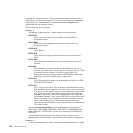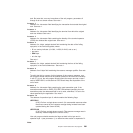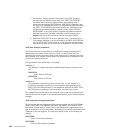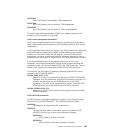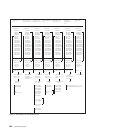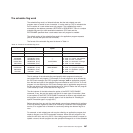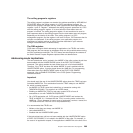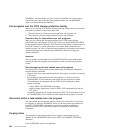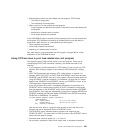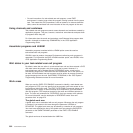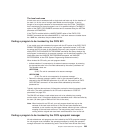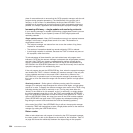
The schedule flag word
The schedule flag word is a fullword indicator that the task-related user exit
program uses to control its own invocation. It is also used by CICS to schedule the
first invocation of a task-related user exit program. The schedule flag word is
accessed by the address parameter UEPFLAGS of DFHUEPAR. There is a unique
schedule flag word for each association between a CICS task and the
ENTRYNAME specified when a task-related user exit program is enabled.
The default setting of the schedule flag word is for application program requests
(that is, the last two bytes are set to X'0004').
The format of the schedule flag word is shown in Table 14.
Table 14. Format of the schedule flag word
Byte Setting EXEC CICS ENABLE
option
Comments
0 — — Reserved.
1 — — Reserved.
2
UEFDCON
UEFDFEDF
UEFDCTER
UEFDTASK
UEFMCON (X'40')
UEFMFEDF (X'10')
UEFMCTER (X'04')
UEFMTASK (X'01')
—
—
SHUTDOWN
—
Bit mask for context management
Bit mask for EDF invocation.
Bit mask for termination manager
Bit mask for task manager.
3
UEFDSYNC
UEFDAPPL
UEFDSPI
UEFMSYNC (X'10')
UEFMAPPL (X'04')
UEFMSPI (X'02')
INDOUBTWAIT
—
SPI
Bit mask for syncpoint manager.
Bit mask for application program
Bit mask for SPI.
The bit settings of the schedule flag word specify which programs invoke your
task-related user exit program. For example, if an exit program is to be invoked by
the CICS task manager, the CICS syncpoint manager, and an application program,
then the last two bytes of the schedule flag word should be set to X'0114'. If an exit
program is to be called by the CICS task manager and an application program only,
the last two bytes of the flag word should be set to X'0104'. Before the exit program
is first called by a task, CICS sets the API flag bit on.
The third column of the table shows the option of the EXEC CICS ENABLE
command, if any, that can be used to set the bit for each type of invocation. (How
to use options of the EXEC CICS ENABLE command to cause a task-related user
exit program to be invoked for specific types of call is described in “Enabling for
specific invocation-types” on page 303.)
Before returning from any call, the task-related user exit can change the bit settings
of the flag word to register its need to be invoked by a different CICS management
service, or to register lack of interest in a service by setting the relevant flag bit to
zero.
For example, a task-related user exit may be called by an application program that
needs to access a non-CICS recoverable resource. When the exit program is first
called, the API bit is set on by CICS. If the calling program then issues a request to
update a record, the exit program sets the syncpoint manager bit on in the schedule
Chapter 2. Task-related user exit programs 287




